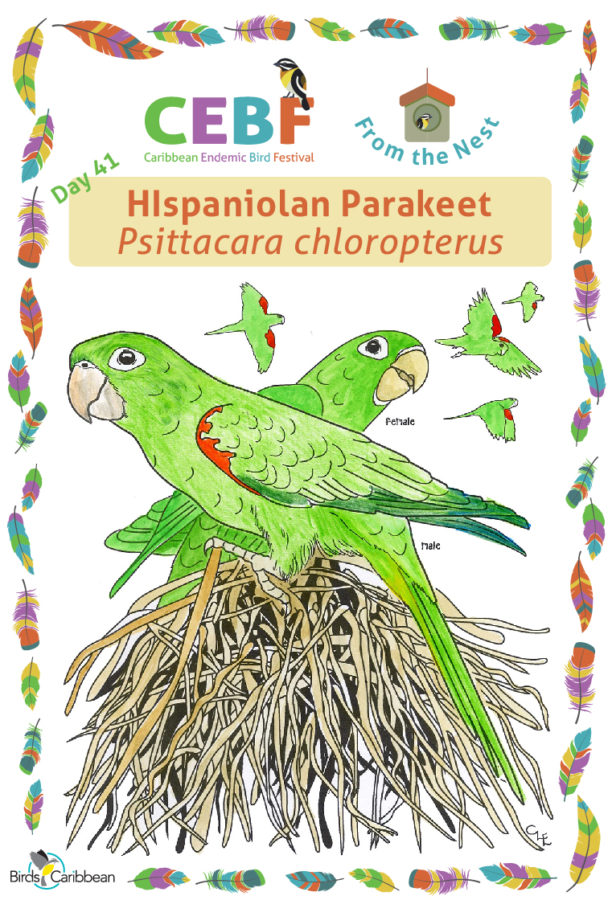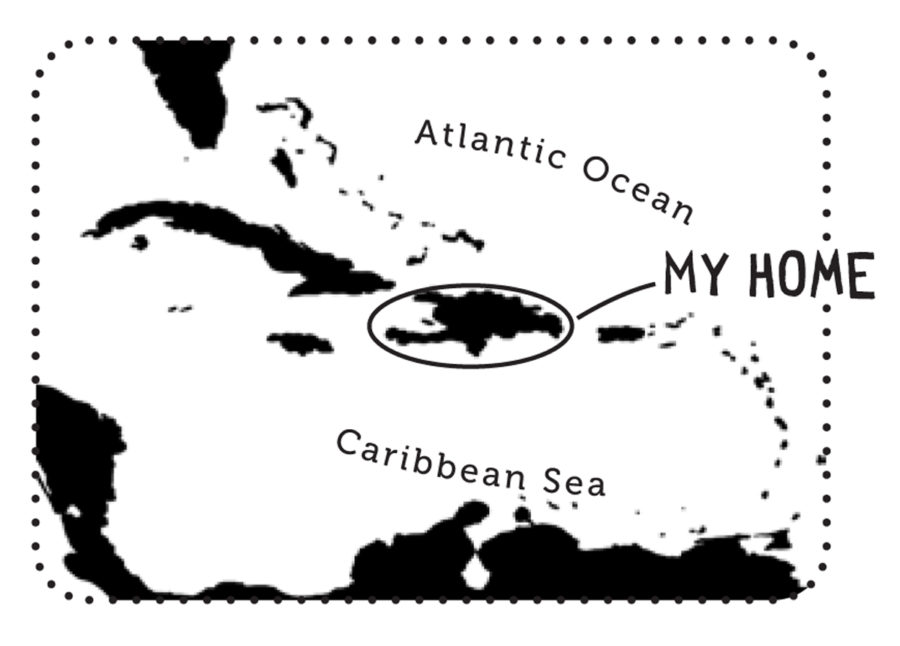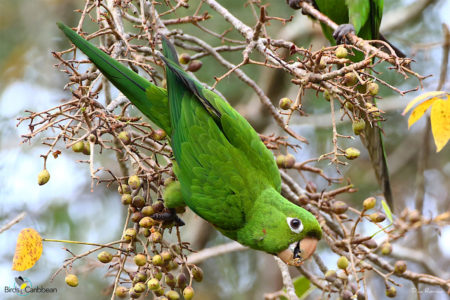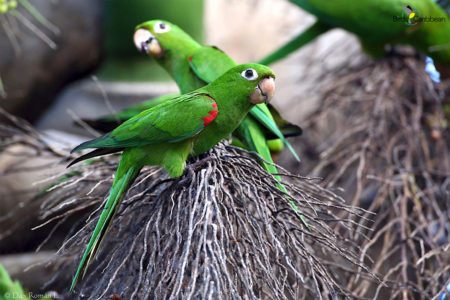Celebrate the Caribbean Endemic Bird Festival (CEBF) with us in our virtual “From the Nest” edition! Have fun learning about a new endemic bird every day. We have colouring pages, puzzles, activities, and more. Download for free and enjoy nature with your family at home.

Endemic Bird of the Day: Hispaniolan Parakeet
 Meet the charming face of Hispaniola – the Hispaniolan Parakeet, known as the Perico in the Dominican Republic, or the Perruche in Haiti. These gregarious, green goofballs are most easily seen chattering noisily from the rooftops of Santo Domingo. They are extremely social and often hang out in large groups with as many as several dozen individuals.
Meet the charming face of Hispaniola – the Hispaniolan Parakeet, known as the Perico in the Dominican Republic, or the Perruche in Haiti. These gregarious, green goofballs are most easily seen chattering noisily from the rooftops of Santo Domingo. They are extremely social and often hang out in large groups with as many as several dozen individuals.
This parakeet is bright green overall, with a long and pointed tail, white eye-ring, pale beak and legs, and red patch on the wing’s wrist area that shows up well in flight. The sexes are identical. The Hispaniolan Parakeet is best distinguished from the similar green Hispaniolan Parrot by its much longer tail and higher pitched squawk-like vocalizations. While they are the only native and endemic parakeet on the island, the Olive-throated Parakeet has been introduced to some of the more urbanized parts of Hispaniola. Similar in size, these parrots can be distinguished by their blue wing patches, instead of the red boasted by the Hispaniolan Parakeet. Interestingly, Hispaniolan Parakeets also used to also exist in Puerto Rico, though they were declared extinct on the island in 1882. Yet one other introduced population persists on the island of Guadeloupe.
The Hispaniolan Parakeet’s natural habitats are forested mountains and lowlands, but there are populations that live in urban areas like the ever-increasing one in Santo Domingo. They feed mostly on fruits and seeds, but sometimes also on corn and other crops and therefore regarded as a pest by farmers. They travel and forage in flocks.
Like many other parrots in Latin America and the Caribbean, Hispaniolan Parakeets are threatened with extinction, currently listed as Vulnerable by the IUCN. Their biggest current threat is poaching, where young parakeets are taken from nests and sold into the pet trade. Deforestation is also a problem— the parrot has been disappearing in areas where forests have been cut down for agriculture. Their current population is estimated at several thousand individuals, with trends showing continuing declines. It is illegal to keep these and the Hispaniolan Parrots as pets. Let’s continue to educate about keeping these magnificent birds free and wild to decrease their presence in captivity and help them survive for future generations to enjoy. Learn more about this species, including its range, photos, and calls here.
Colour in the Hispaniolan Parakeet!
Download the page from Endemic Birds of the West Indies Colouring Book. Use the drawing above or photo below as your guide, or you can look up pictures of the bird online or in a bird field guide if you have one. Share your coloured-in page with us by posting it online and tagging us @BirdsCaribbean #CEBFfromthenest
Listen to the call of the Hispaniolan Parakeet
The Hispaniolan Parakeet has a noisy screeching flight and perch call kree, higher pitched that than the Hispaniolan Parrot.
Puzzle of the Day
Click on the image below to do the puzzle. You can make the puzzle as easy or as hard as you like – for example, 6, 8, or 12 pieces for young children, all the way up to 1,024 pieces for those that are up for a challenge!


Activity of the Day
FOR KIDS & ADULTS: Read more about the laws that protect Hispaniolan Parakeets, Parrots and other birds that are captured for the illegal pet trade. What can you do to help?
Caribbean Endemic Bird Festival Highlights Laws that Protect Birds
